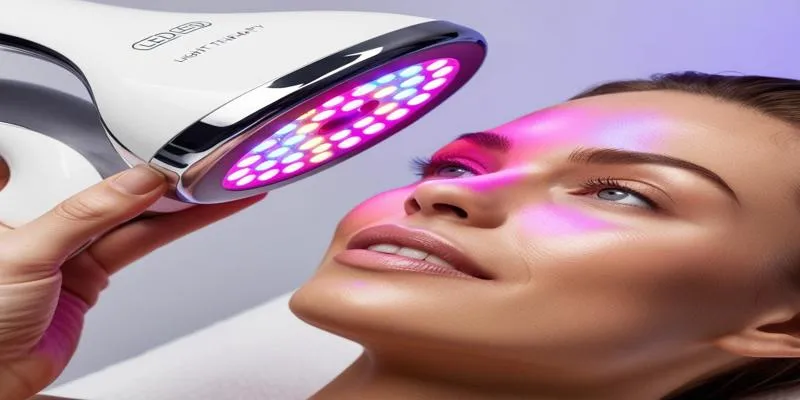How Does Red Light Therapy for Psoriasis Work?
Are you dealing with psoriasis and exploring different treatment options? Red light therapy could be a promising solution. This innovative procedure utilizes specific light wavelengths to enhance skin healing and reduce inflammation. In this article, we delve into the science behind red light therapy, its potential benefits for psoriasis sufferers, and what you can expect from this treatment.
Understanding Psoriasis: Causes and Symptoms
** What is
What is
Psoriasis?**
Psoriasis is a chronic skin condition marked by an autoimmune reaction, rapid cell turnover, and skin inflammation. This results in thick, scaly patches on the skin surface. While psoriasis can appear anywhere on the body, it is most commonly found on the elbows, knees, scalp, and lower back.
Causes of Psoriasis
The exact cause of psoriasis remains unknown; however, genetic and environmental factors are believed to play a role. You are more likely to develop psoriasis if a family member has the condition. Certain triggers can cause symptoms or flare-ups, including:
- Stress
- Infections
- Skin injuries
- Some medications
- Cold, dry climates
Recognizing the Signs and Symptoms of Psoriasis
Psoriasis symptoms can vary between individuals but may include:
- Red, sore patches of skin
- Silvery-white scales covering the red patches
- Dry, cracked skin that may bleed, itch, burn, or feel sore
- Thickened, pitted, or ridged nails
The severity of psoriasis can range from small, localized patches to widespread coverage across large areas of the body. Despite its appearance, psoriasis is not contagious.
The Science Behind Red Light Therapy for Psoriasis
Understanding Light Therapy
Red light therapy involves using specific wavelengths of light that interact with and potentially improve cellular processes in the body. This non-invasive method uses red and near-infrared light on the skin to relieve psoriasis symptoms.
Cellular Effects
Red light therapy operates at the cellular level, interacting with mitochondria, the powerhouse of cells. Exposure to this wavelength increases the production of adenosine triphosphate (ATP) by mitochondria, which is crucial for delivering energy to various cellular functions. This can accelerate cellular repair and regeneration, benefiting skin disorders like psoriasis.
Reducing Inflammation
One of the major benefits of red light therapy for psoriasis is its potential anti-inflammatory action. The light waves increase anti-inflammatory mediators and suppress pro-inflammatory cytokines. This action may help calm the overactive immune response in psoriasis, reducing redness, scaling, and itching.
Regulating Skin Cell Turnover
Psoriasis is characterized by increased skin cell turnover, leading to plaque buildup. Red light therapy may help normalize this process by promoting a balanced cell proliferation and differentiation cycle, resulting in smoother, healthier-looking skin.
Enhanced Blood Flow
Red light therapy may also benefit psoriasis patients by enhancing circulation. The light encourages the formation of new capillaries, increasing blood flow to affected areas. This improves oxygen and nutrient delivery to the skin, boosting the healing process and reducing the appearance of psoriatic lesions.
How Red Light Therapy Treats Psoriasis
** **Red light therapy,
also known as low-level light therapy or photobiomodulation, is a promising
treatment for psoriasis. This non-invasive treatment involves applying
specific wavelengths of light to the skin to target affected areas and
accelerate healing. Let’s explore how this therapy works.
**Red light therapy,
also known as low-level light therapy or photobiomodulation, is a promising
treatment for psoriasis. This non-invasive treatment involves applying
specific wavelengths of light to the skin to target affected areas and
accelerate healing. Let’s explore how this therapy works.
Cellular Stimulation
Red light therapy involves skin penetration and stimulation of cellular function. During exposure, skin cells’ mitochondria absorb red and near- infrared light, using energy to enhance ATP production, an essential part of cellular energy and metabolism. This makes skin cells more efficient in repair and regeneration without the rapid cell turnover typical of psoriasis.
Reduced Inflammation
Red light therapy can modulate the immune response through skin organs, decreasing pro-inflammatory cytokines while increasing anti-inflammatory mediators, potentially alleviating chronic inflammation associated with psoriasis.
Improved Blood Flow
Red light therapy promotes microcirculation in treated areas. Improved blood flow enhances skin cell oxygenation and nourishment, aiding wound healing. This may reduce scaling and redness often accompanying psoriatic lesions.
Boosted Collagen Production
Red light therapy increases collagen production, crucial for maintaining skin health and elasticity. Boosting collagen synthesis may improve skin texture and gradually reduce the appearance of psoriatic plaques.
Benefits of Red Light Therapy for Psoriasis Patients
Red light therapy offers several powerful benefits, making it a popular psoriasis treatment. Here are some key advantages:
Reduced Inflammation and Itching
Red light therapy’s anti-inflammatory action is a major advantage. The wavelengths penetrate deeply, soothing irritated cells by reducing inflammatory compounds. This often results in less redness, swelling, and itching, significantly relieving patients.
Improved Skin Healing
Red light therapy enhances collagen and elastin production, essential skin proteins. Increased cellular activity aids in healing psoriatic lesions, speeding up plaque clearance and improving skin smoothness.
Non-Invasive and Painless
Unlike other psoriasis treatments, some of which have side effects or cause discomfort, red light therapy is non-invasive and generally pain-free. Patients experience no discomfort during sessions, making it an appealing option for those seeking gentler management methods.
Potential for Long-Term Management
Though further research is needed, some reports suggest continuous red light therapy may suppress flare-ups by prolonging remission. This progress could help maintain better control over long-term complications, improving the quality of life for chronic psoriasis sufferers.
Complementary Treatment Option
Red light therapy can be combined with other psoriasis treatments to enhance their effectiveness. Used alongside topical or systemic therapy, it offers a more comprehensive approach to symptom management.
Conclusion
Red light therapy emerges as a promising, non-invasive treatment for psoriasis. It suppresses inflammation and accelerates healing, alleviating symptoms through specific light wavelengths. While further research is needed to confirm long-term efficacy, many patients have noticed remarkable improvements.








